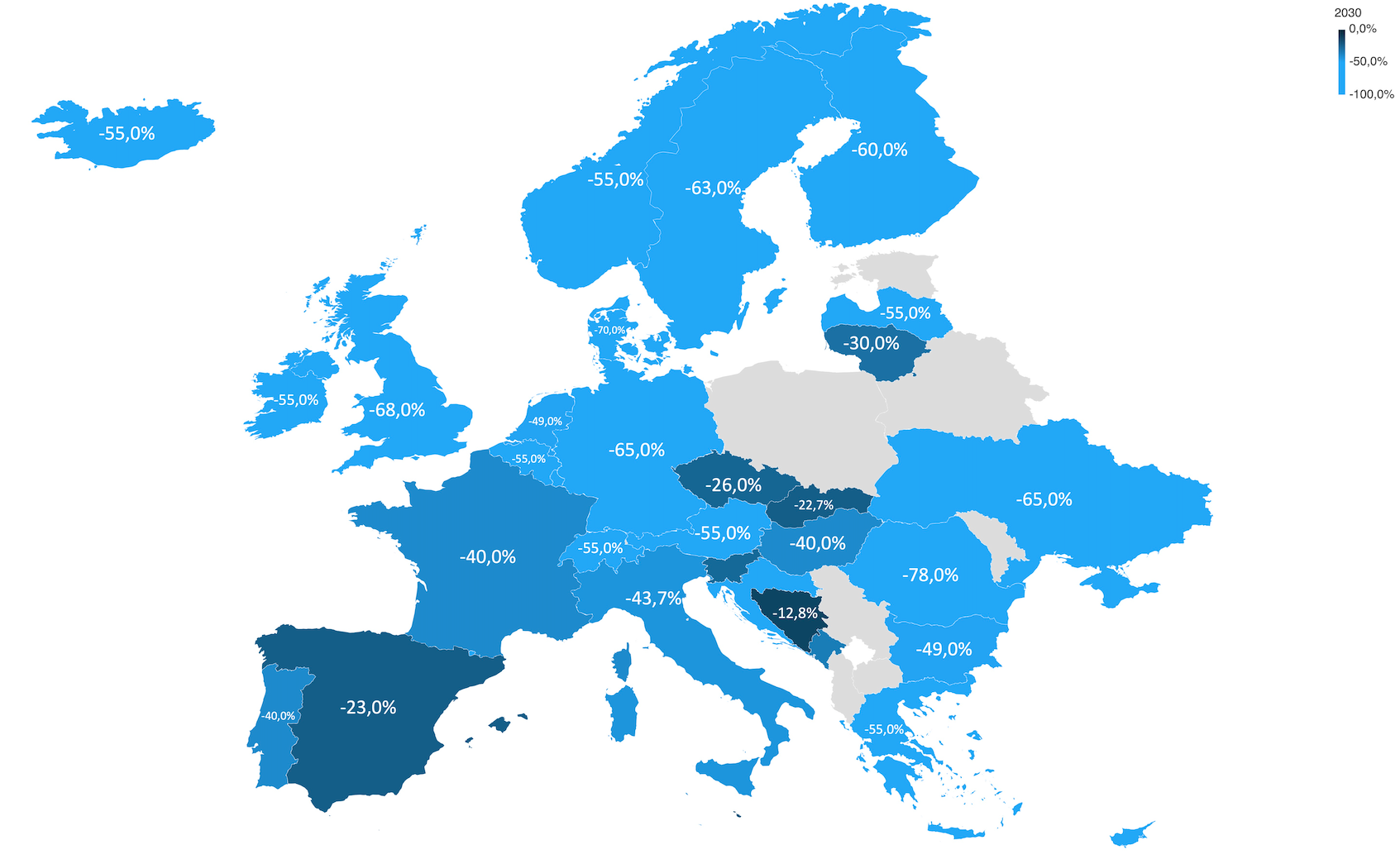Road to 2050. Europe at almost the halfway point.
Europe's goal is to achieve ‘net zero’ greenhouse gas emissions by 2050. Each country has given itself a timeline with intermediate steps. The first, quite close, is 2030. Is the Old Continent ready to become a modern, resource-efficient and competitive economy?

Figura 1: target di diminuzione delle emissioni di gas effetto serra in Europa (%) entro il 2030.
Italy
The Piano Nazionale Integrato per l'Energia e il Clima 2030 (PNIEC) (Integrated National Energy and Climate Plan 2030) is the fundamental tool that outlines the guidelines for the decarbonisation of Italy. The latest version, sent to the European Commission on 1 July, confirms the objectives set in June 2023, and exceeds, especially on renewable energies, the targets already announced.
For Renewable Energy Sources (RES), the government's commitment is that Italy will have to reach a renewable energy capacity of 131 Gigawatts by 2030. It is expected that 79.2% will come from solar.
As far as greenhouse gas emissions and removals are concerned, Italy plans to exceed the ‘FitFor55’ target for industrial plants bound by ETS (Emissions Trading System) regulations, reaching -66% compared to 2005 levels (EU target, -62%).
For the ‘non-ETS’ sectors (civil, transport and agriculture), although there has been a substantial improvement in emission indicators, more effort will be needed to reach the European targets.
